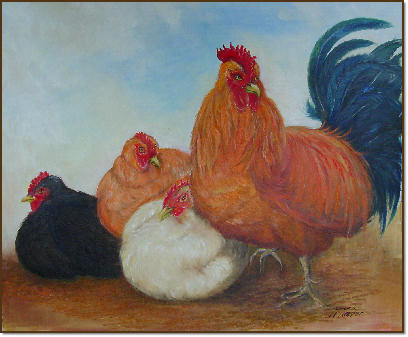
a commentary on the spiritual life
Thoughts on
Letting Life Live
This is part of our response to an inquiry from TZF’s good friend, Elsa Joy Bailey.
In your message about coping with life’s difficulties, you wrote, “I remind myself that Divine Mother is making sure I am centered enough to breathe it in, and embrace it without judgment. Most of the time anyway. I still have some alarming human aspects.”
To that, I replied in part, “Elsa, please, do not be ‘alarmed’ at your ‘human aspects.’ It is perfectly okay to be human. In fact, it is Divine.”
That was my short answer. Later, you wrote and asked for the long version, and here it is. I think they are identical, although this one consumes a lot more oxygen.
The question raised by your original observation goes straight to the heart of the spiritual process, to the central inquiry “Who Am I?” and what disturbed me about it was the apparent assumption (one which we all make!) that there is something wrong with being human.
All of us have convinced ourselves that the Universe consists of at least two places (or natures or conditions or positions or levels or dimensions or planes or whatever), which we label variously, but something like “heaven” and “earth.” Sometimes we mean that almost astronomically, as in “Heaven is [pointing skyward] up there,” and sometimes we mean it metaphysically, as in “Heaven is [pointing to the chest] within”; but however we mean it, we know that we would much prefer to be “there” than “here,” to be in heaven than on earth; and this is so because, in this analysis, God and everything ”heavenly” are Divine, and we and everything “earthly” are, well, ugh, human.
That is simply not the Way It Is.
In one of my favorite passages of the Bhagavad Gita (Chapter 11:8ff), Arjuna (who is you and I) asks Krishna (God) to reveal Himself to him. In this wonderfully poignant exchange, humanity says to Divinity, “Show Your Self to me.” To that, Krishna replies, “these eyes of yours cannot see Me.” Then, in his infinite love, Krishna gives to Arjuna “a divine eye.” So equipped, Arjuna Sees God as He (She, It, Whatever) Truly Is.
And what exactly does Arjuna see with this ”Divine Eye”? Does he see God as something outrageous, something extra-ordinary, something even “heavenly”? The Gita says: “There, in the person of the God of gods, Arjuna beheld the whole universe, with its manifold divisions, all gathered together in one.”
Arjuna saw what he had always been seeing, the universe. It was not a new or different or higher or esoteric or even more spiritual universe; in fact, it was not in any way a better universe. It was just the universe.
But there was one difference, and that difference makes all the difference. With his “human” eyes, Arjuna saw the universe as consisting of “manifold divisions.” With his “Divine Eye,” Arjuna saw the universe “all in one.”
The difference was not in WHAT Arjuna is now able to see, but in HOW Arjuna sees what was already there!
The lesson for us, as seekers, is that there is nothing wrong with the universe, except our perception of it. And by extension, there is nothing wrong with us, except our perception of ourselves. If God is All The Universe, then God is us, too, and our insistence as seekers on “improving ourselves” (perfecting or overcoming our humanity) is at best futile, at worst blasphemy.
So, what we need to do as seekers is not struggle to become less human and more spiritual, because as Arjuna saw, God being all of that, there is no difference between the two. Instead, we need to rid ourselves of the distinction between “being human” and “being spiritual.” We need to recognize that it is enough to be human. We need to surrender to being human. Only in so doing do we surrender to being Divine.
We need to understand what it means to know that God is perfectly ordinary, and that being perfectly ordinary is Divine. That is what the Buddha means when he says to us, in effect, “Complete and unexcelled awakening is nothing special, and that is how you know it is complete and unexcelled awakening.” And it is what Issa (Jesus) means when he holds up a glass of wine and a piece of bread, and says, “This is my blood, this is my body.” Notice he did not hold up a shooting star or a cherub or any other mind-boggling thing. Just bread and wine, about as ordinary as you can get. “See this?” he asks, “Well, I Am That.” Bread, wine, water, computer keyboard, dining room table, or whatever else (including, of course, shooting stars, cherubs, and any other mind-boggling thing).
”I Am That” means, wherever we are, whatever we are doing, whatever is happening, KNOW THIS TO BE ME. Including our selves. Thus, the Teachers tell us: “Don’t try to change yourselves; instead, Know Your Selves. You will continue to insist you are not worthy to be Divine only so long as you do not see that you already are Divine!” Likewise, the powerful mantra or affirmation “Remember Me!” is not some other speaking to us, but our very Self, and it is intended to remind us that we ourselves and whomever or whatever we perceive are all That, there being no thing else but That. Similarly, the illusion spoken of in so many spiritual traditions is precisely the “manifold divisions” perceived by Arjuna’s “human eyes.” Where we see many, there is only one, the One, for there are no others. Never have been, never will be.
Remember, too, that all the pain we feel in our lives is created by this same on-going conflict in our minds between what we are and what we think we are. We are constantly insisting to everyone and everything we encounter (albeit subconsciously), “I am me, and you aren’t,” and that fundamental falsehood prevents us from experiencing ourselves or our lives as they actually are. As a result, we are miserable most of the time, not to mention exhausted (it takes a lot of energy to maintain, defend, and justify the space we have created between “what is” and “what we think is”).
In a word, Elsa, our lives are not happening to us; our lives are us happening. As soon as we embrace that truth, we will begin to understand who we really are. Therein lies the function of every spiritual path.
Just so, at the heart of all spiritual traditions, of all the Teachings, is the same, basic inquiry: Who Am I? Not, What could I be? Not, What should I be? Not even, How should I improve? It is always simply, Who am I?
And that’s because the spiritual path is not about self-improvement. All seekers inevitably get involved with some of that because as we come to know ourselves, we naturally and freely let go of a lot of junk (habits, tendencies, desires, and so on) we never really even wanted. But all of that is simply a coincidence, for it is not the function of the spiritual path to make us better citizens.
Rather, the spiritual path is about Self-Perception, which means releasing all the old limitations, definitions, standards, and judgments. Not with resentment, resignation, disappointment, or any other form of self-indulgent self-flagellation, but quietly, gently, and happily.
So, dear friend, the next time your “human aspects” drive you up a wall, do not condemn them. Do not even seek to transcend them. Instead, embrace them. Better yet, be them. Throw yourself into them so thoroughly that the line of demarcation between “me” and “my aspects” ceases to exist. You may be very surprised at the peace, the joy, the love, and the silence.
Editor’s Note: If you came here from “The Simple Way” and would like to return, please click here.



